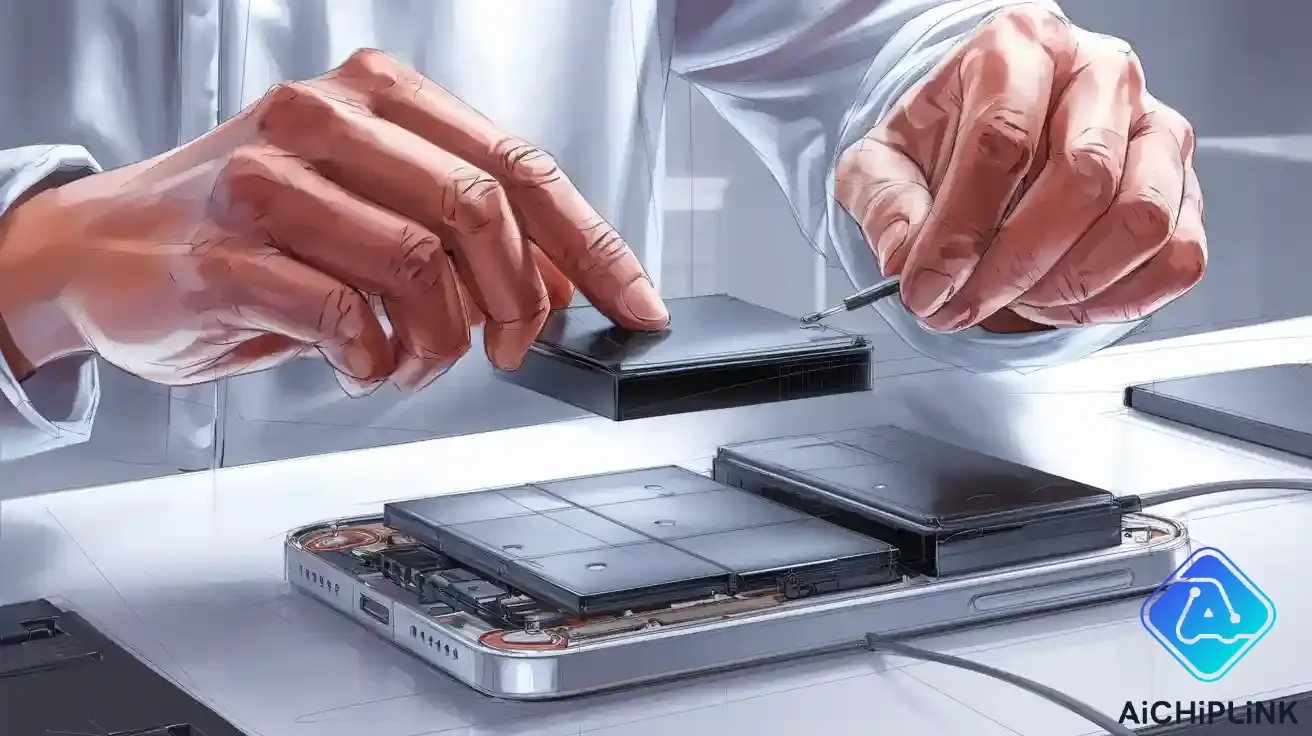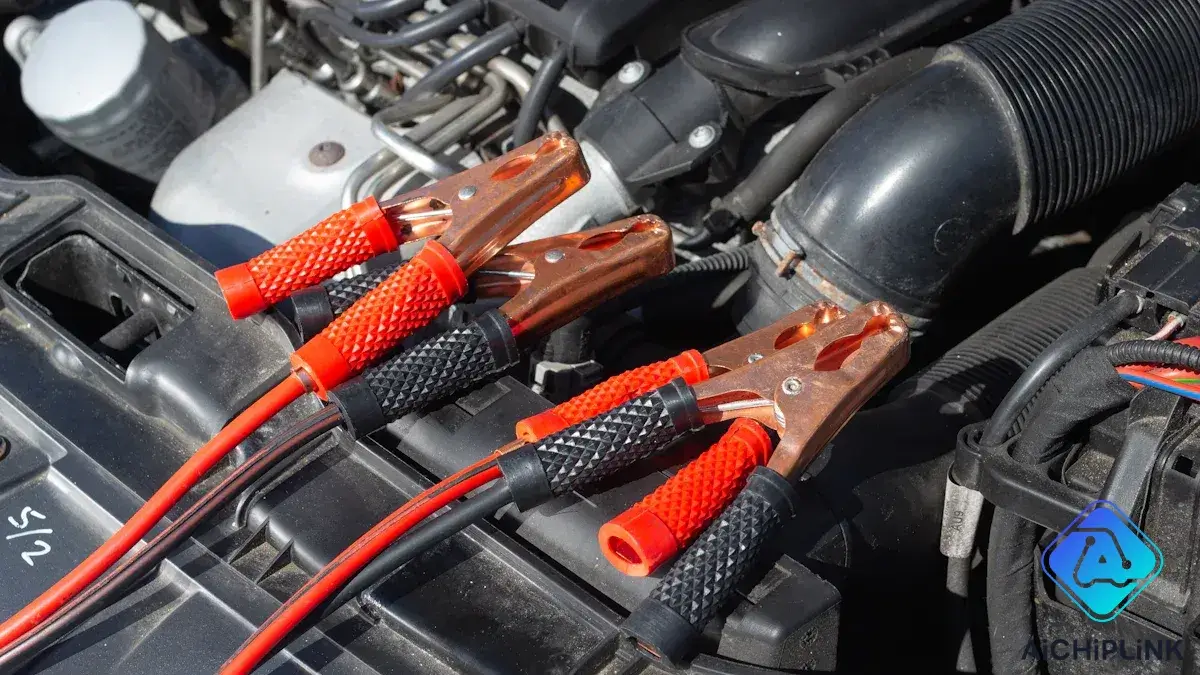
You can extend the lifespan of your lithium-ion battery with small changes. Try these easy habits:
-
Keep your lithium-ion battery in a cool, dry place. The best temperature is about 59°F to help extend lifespan.
-
Try to keep the charge between 40% and 80%. This helps protect the battery and extend its lifespan.
-
Do not let lithium-ion batteries go below 20% charge to extend lifespan.
-
Charge the battery a little at a time instead of all the way to extend lifespan.
-
Keep the temperature between 32°F and 95°F when using it. This helps extend the battery’s lifespan.
-
Charge your lithium-ion battery before it stays empty for too long to extend lifespan.
These simple steps help you extend the lifespan of your lithium-ion battery for longer use.
Key Takeaways
-
Keep your battery charge between 20% and 80% to protect it and make it last longer.
-
Avoid letting your battery drop to zero or stay fully charged for too long to prevent damage.
-
Use the charger made for your device to keep your battery safe and working well.
-
Store your battery in a cool, dry place and avoid extreme heat or cold to extend its life.
-
Turn on battery saver and limit background apps to reduce power use and help your battery last.
Extend Battery Lifespan
Avoid Full Discharge
If your lithium-ion battery goes to zero, it can get damaged. When your device turns off because the battery is empty, it loses power faster. Later, it might not hold a charge well. Scientists say deep discharges cause chemical changes inside the battery. These changes make the battery wear out quicker. For example, one study showed batteries that went to zero lost almost all their power after 250 cycles. Batteries kept above the lowest level kept most power after 300 cycles.
Tip: Plug in your device before the battery drops below 20%. This easy habit helps you avoid damage and keeps your battery working longer.
Here are the main reasons not to let your battery go to zero:
-
Full discharge lowers battery power and makes voltage unstable.
-
Makers say to keep lithium-ion batteries above 20% to stop damage.
-
Shallow discharges (not letting the battery get too low) help the battery last 2-3 times longer than deep discharges.
-
Battery management systems in your device help protect against deep discharge, but your habits matter most.
Keep Charge 20%-80%
Keeping your battery between 20% and 80% helps it last longer. Charging lithium-ion batteries to 100% or letting them go to 0% is hard on the battery. If you keep the charge in the middle, you help the battery last much longer.
Research shows charging only up to 80% gives you about 80% of the energy per cycle. It also causes five times less damage than charging to 100%. Over time, this means you get up to four times more use from your battery. Some lithium-ion batteries can last for thousands of cycles if you avoid full charges and deep discharges.
Note: If your device has a battery saver or charge limit setting, turn it on. This feature helps keep the charge in the safe range automatically.
Try these good charging habits:
-
Plug in your device when the battery drops to around 20%.
-
Unplug it when the charge reaches 80%.
-
Do not leave your device plugged in overnight.
-
Use slow charging when you can, because fast charging makes more heat and stress.
Use Right Charger
Using the right charger is important for safety and battery life. Chargers made for your device control the voltage and current for the battery. If you use a cheap or wrong charger, you could overcharge, overheat, or damage the battery.
-
Chargers not made for lithium-ion batteries can cause overcharging or electrical surges.
-
Overcharging may cause overheating, fire, or even explosions.
-
Certified chargers meet strict safety rules and help prevent electric shock, fire, and battery damage.
| Safety Aspect | Description |
|---|---|
| Electrical Safety | Certified chargers stop electric shock and keep things safe. |
| Overheating Prevention | Good chargers help avoid overheating when charging. |
| Safety Standards | Certified chargers meet rules like UL and IEC for safety and reliability. |
| Hazard Mitigation | Proper chargers help stop fire, battery damage, and other dangers. |
Tip: Always use the charger that came with your device or a trusted replacement made for your model. Unplug your device once it is fully charged to avoid extra stress on the battery.
If you follow these habits—do not let your battery go to zero, keep your charge between 20% and 80%, and use the right charger—you can make your lithium-ion battery last much longer and enjoy more time using your electronics.
Manage Temperature

Avoid Heat/Cold
You can help your lithium-ion battery by keeping it away from very hot or cold places. Hot weather makes chemical reactions inside the battery happen faster. This can make the battery swell, lose power, or even catch fire. If it gets hotter than 131°F, the battery can get damaged quickly. Leaving your battery in a hot car or charging it in the sun can make it wear out faster.
Cold weather is also bad for lithium-ion batteries. When it is too cold, the battery’s chemical reactions slow down. This makes the battery lose power and can cause cracks inside. Charging a battery when it is freezing can hurt it forever. Try not to use or charge your device when it is very cold outside.
Tip: Keep your device between 68°F and 86°F. This helps your battery work better and last longer.
Here are some ways to keep your device cool:
-
Do not leave your phone or laptop in the sun.
-
Use your device in the shade when you are outside.
-
Make sure air can move around your device. Do not cover it with blankets or pillows.
-
Take breaks when playing games or watching videos so your device can cool down.
Store in Cool Place
Putting your lithium-ion battery in a cool, dry spot helps it last longer. Heat makes batteries age faster, and cold can break them inside. The best place to store your battery is between 68°F and 77°F. Do not put batteries in the sun or in wet places.
| Storage Condition | Temperature Range (°C) |
|---|---|
| Short-term storage | -20 to +40 |
| Long-term / optimal | -20 to +25 |
Keep your battery partly charged, around 40-60%. This helps the battery stay healthy. Make sure batteries do not touch metal or each other. This stops short circuits.
Note: Check your stored batteries every few months. Charge them if they get too low.
If you keep your batteries at the right temperature and store them the right way, they will last longer and your devices will work better.
Maximize Lithium-Ion Battery Life
Reduce Heavy Use
You can make your lithium-ion battery last longer if you do not use it too much at once. Playing 3D games or watching videos uses a lot of power. These things make your device work harder and get hot fast. When your device gets hot, the battery’s chemicals move faster. This can hurt the battery and make it not last as long. Fast charging while using your device a lot makes it even hotter. This is bad for how long your battery will work.
Take breaks when you play games or watch videos. Let your device cool off before you use it again. This easy habit helps your battery last longer.
A study found that letting the battery get very low is one of the worst things for lithium-ion batteries. If you do not let your battery get too low, it can last over 38% longer. Good battery care means you should not let your device run until it turns off.
Use Battery Saver
Most devices have a battery saver mode. This setting helps your lithium-ion battery last longer by using less power. Battery saver does things like:
-
Makes the screen less bright and changes brightness by itself.
-
Turns on dark mode to save power on OLED screens.
-
Makes the screen turn off faster when you are not using it.
-
Turns off things you do not need and stops some apps from running.
When you use battery saver, your device helps keep the battery healthy. This mode also stops the battery from staying at 100% for too long. That helps the battery keep working well. Using these settings can really help your battery last longer.
Turn on battery saver when your battery is below 50% or when you will be away from a charger for a long time.
Limit Background Apps
Apps running in the background can use up your lithium-ion battery even if you are not using your device. Apps like Facebook, Instagram, and TikTok keep updating and syncing when you are not looking. This uses power and makes your battery not last as long. You can save battery by stopping apps from refreshing in the background and turning off notifications for apps you do not need.
-
Stop background refresh for apps that do not need to update all the time.
-
Turn off notifications for apps that are not important.
-
Close apps you are not using to save battery.
Experts say stopping background app activity helps your battery last all day. This easy step helps your device work longer between charges. Your device’s battery system works best when you stop extra background activity.
Storage & Maintenance

Store Partially Charged
When you put your device away, keep the battery partly charged. Do not store it with a full or empty battery. A full battery in storage can make it swell or leak. An empty battery can lose power and might stop working. For short storage, keep the charge under 30%. For long storage, try to keep it at about half. This slows down losing charge and keeps the battery healthy.
-
Check the battery every few months.
-
If the charge is under 20%, charge it back up.
-
Do not leave your battery plugged in while storing it.
Keeping your battery at the right charge helps protect it and makes it last longer.
Avoid Long Storage
If you do not check your battery often, long storage can hurt it. Leaving a battery unused for months can make it lose too much charge. This can damage the battery and make it weaker. Check your battery’s charge every few months. If you store it for more than six months, use and charge it once every six months. This keeps the battery working and helps it stay strong.
-
Store batteries in a cool, dry place.
-
Keep them out of the sun and away from heat.
-
Do not store batteries where it is wet.
A table for the best battery storage:
| Storage Time | Charge Level | Temperature |
|---|---|---|
| Short-term (<1mo) | <30% | Cool, dry place |
| Long-term (>3mo) | ~50% | 59°F-77°F |
Clean Contacts
Taking care of your battery means cleaning the contacts. Dirt or rust on the contacts can make the battery work worse. Use a dry cloth to wipe the contacts every few months. This helps your device stay connected and keeps the battery strong. Always follow the maker’s rules for cleaning and care.
-
Look for swelling or leaks.
-
Get a new battery if you see damage.
-
Only use chargers that are made for your battery.
Taking care of your battery and storing it right helps it last longer and keeps your electronics working well.
Common Battery Mistakes
A lot of people make easy mistakes with their lithium-ion battery. These mistakes can make the battery not last as long. You can stop these problems if you know what not to do.
Overcharging
If you leave your device plugged in after it is full, it can hurt the lithium-ion battery. Overcharging makes the battery get hot and builds up pressure inside. This can change the battery’s chemicals and make it lose power. It can even cause fires or explosions. The battery management system might not stop all the damage, especially with a bad charger. Overcharging can also cause lithium to build up and make the battery get old faster.
Tip: Unplug your device when it is fully charged. Do not charge it all night.
Here is what happens if you overcharge:
-
The battery gets hot and loses power.
-
Chemical reactions happen faster inside the battery.
-
Pressure goes up, and the battery can swell or leak.
-
The chance of fire or explosion gets higher.
Cheap Chargers
Cheap or fake chargers can hurt your lithium-ion battery. These chargers may not charge the battery the right way. They can make the battery get too hot or even cause a short circuit. Many fires and explosions happen because people use unsafe chargers. Chargers from the maker help keep your battery safe.
| Charger Type | Safety Level | Risk of Damage |
|---|---|---|
| Manufacturer-Approved | High | Low |
| Cheap/Uncertified | Low | High |
Always use the charger that came with your device or one the maker says is safe.
Skip Updates
Not updating your device can hurt your lithium-ion battery. Updates help the battery system work better and fix problems that waste power. They help your device use less energy and keep the battery healthy. Updates also help with charging and background apps.
-
Updates fix problems that waste battery power.
-
They help the battery system work better.
-
Updates make sure your device uses new battery-saving tools.
Turn on automatic updates to help your device and battery work well.
Common mistakes to avoid:
-
Letting the battery go empty a lot.
-
Letting the battery get too hot or too cold.
-
Storing the battery full for a long time.
-
Using the wrong charger.
-
Not updating your device.
-
Letting apps run in the background too much.
If you avoid these mistakes, your lithium-ion battery will last longer and your device will be safer.
You can extend lifespan by keeping your lithium-ion battery between 20% and 80%. Avoid deep discharges and overcharging to extend lifespan. Use the right charger and store your battery in a cool place. These habits help extend lifespan and keep your device working well. Start with one or two changes today. When you care for your battery every day, you get more power and longer use. 😊
FAQ
How often should you charge your lithium-ion battery?
You should charge your battery when it drops to about 20%. Try not to let it go lower. Unplug it when it reaches 80%. This habit helps your battery last longer.
Can you use your device while charging?
Yes, you can use your device while it charges. Heavy use can make it heat up. If your device gets hot, let it cool down before using it again.
What should you do if your battery gets hot?
If your battery feels hot, stop using your device. Move it to a cool place. Unplug it if you are charging. Let it cool before using or charging again.
Is it safe to leave your device plugged in overnight?
No, you should not leave your device plugged in overnight. Overcharging can damage the battery. Unplug your device when it is fully charged to keep the battery healthy.
Do software updates help battery life?
Yes, updates help your battery last longer. Updates fix bugs and improve how your device uses power. Turn on automatic updates to keep your battery working well.

Written by Jack Elliott from AIChipLink.
AIChipLink, one of the fastest-growing global independent electronic components distributors in the world, offers millions of products from thousands of manufacturers, and many of our in-stock parts is available to ship same day.
We mainly source and distribute integrated circuit (IC) products of brands such as Broadcom, Microchip, Texas Instruments, Infineon, NXP, Analog Devices, Qualcomm, Intel, etc., which are widely used in communication & network, telecom, industrial control, new energy and automotive electronics.
Empowered by AI, Linked to the Future. Get started on AIChipLink.com and submit your RFQ online today!




